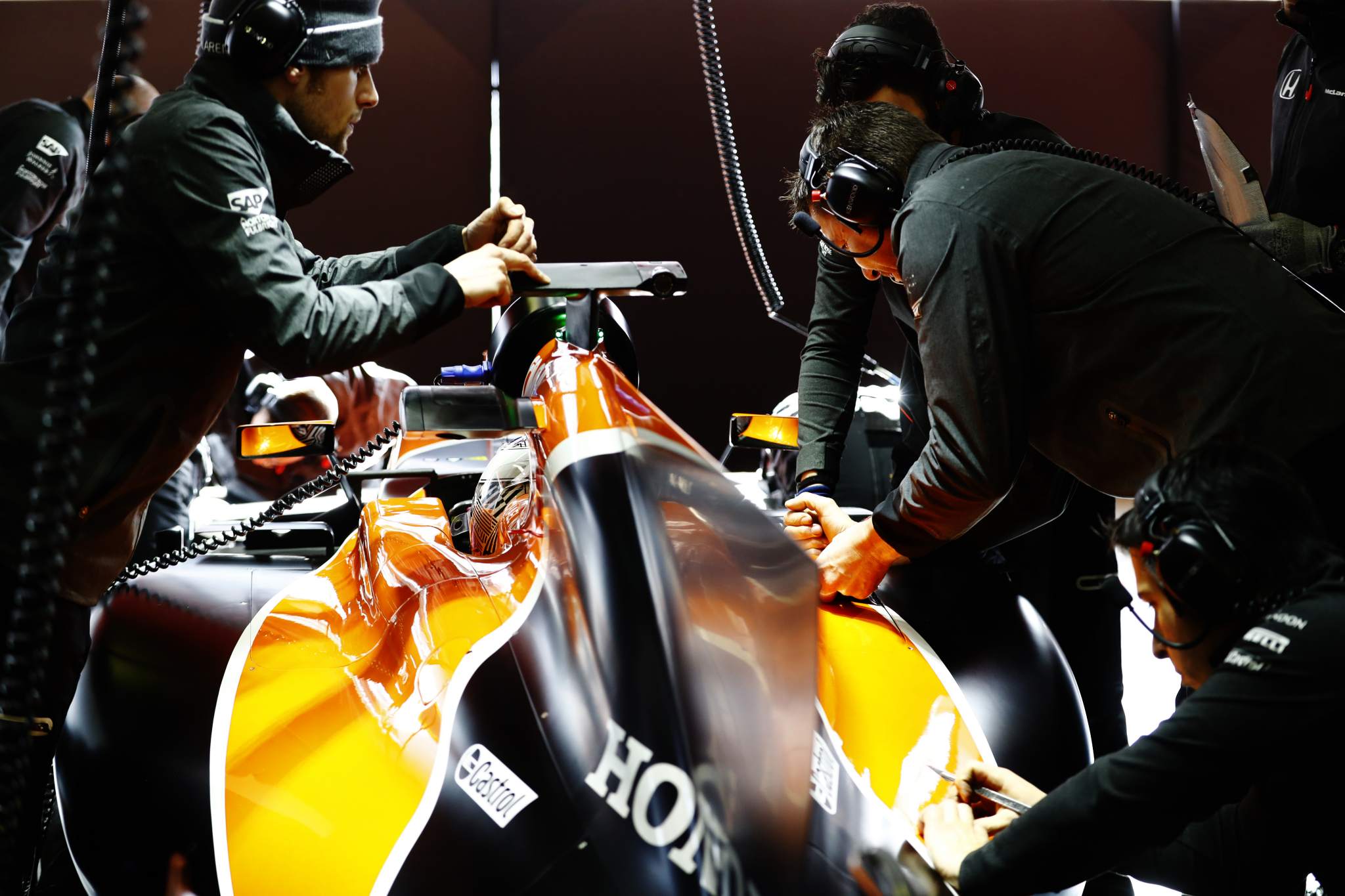McLaren Racing has given further insight into how they are using 3D printing for their 2017 Formula One race car.
As previously reported, McLaren has signed a four-year agreement with US 3D printing company Stratasys to implement the technology into their workflow. Now, the British racing team has documented how 3D printing has been used in development of the car and disclosed plans to use a 3D printer trackside during the 2017 F1 season.
McLaren, based in Woking UK, has given a number of examples of their use of 3D printing, including the production of a hydraulic line bracket, brake cooling ducts, and rear wing flap. The technology has also been used by McLaren for rapid prototyping in the example of the steering wheel.

Adapting to 2017 changes
The 2017 Formula One season has seen drastic changes to car design. The race cars for this year have been adjusted with wider tyres and bodywork considered the biggest changes for a number of years. With these changes needing to be implemented so rapidly, it is no surprise that McLaren has attempted to gain an edge with rapid prototyping with Stratasys. We reported on the drastic car changes and how 3D printing could play a role following the conclusion of last season. However, while 3D printing is often used as a prototyping tool, even elsewhere in Formula One, it is particular interesting that McLaren has utilized 3D printing to create final race-ready parts.
The speed of additive manufacturing is clearly attractive to the motorsport team. This is shown as they were able to 3D print a hydraulic line bracket in just fours. Producing the part in carbon fiber reinforced nylon material, they were able to cut down from a conventional manufacturing time of two weeks.

Making McLaren more competitive
Design and Development Director at McLaren Racing Limited, Neil Oatley explains how 3D printing can benefit the racing team. He states that McLaren are constantly modifying and improving the design of the cars and so, “the ability to test new designs quickly is critical to making the car lighter and more importantly increasing the number of tangible iterations in improved car performance.” Oatley believes that if 3D printing can bring developments to the car even one race earlier, it can make the team more competitive which is, of course, their ultimate aim. He says,
By expanding the use of Stratasys 3D printing in our manufacturing processes, including producing final car components, composite lay-up and sacrificial tools, cutting jigs, and more, we are decreasing our lead times while increasing part complexity,

Trackside 3D printing
The Formula One racing team will reportedly be utilizing a Stratasys uPrint SE Plus3D printer trackside in order to immediately iterate changes and essentially bring the warehouse to the track. McLaren will be able to iterate new designs on site during race weekends and possibly implement them before the race on Sunday.

Accelerating production times
McLaren has used Stratasys’ 3D printing technology to produce race-ready parts and as a tool for producing carbon fibre parts. Before the opening race, McLaren used 3D printing to solve a distracting communication cable in the new car. They designed and iterated three different solutions using their Stratasys machines in a single day and then 3D printed the final design in just two hours. The 3D printed “rubber-like boot” part was implemented for the first race of the 2017 season.
While to create a brake cooling duct, McLaren 3D printed cores in water soluble material that were then used to create functional carbon fibre composite parts. The team also used similar techniques to increase downforce in the rear wing flap. Using Stratasys’ Fortus 900mc 3D printer, McLaren were able to create a high temperature ULTEM mold in three days which reduced time dramatically.

Additive proving its worth
Stratasys EMEA President, Andy Middleton believes Formula One is the perfect application for the technology to prove its worth. He said this about the announcement,
Formula 1 is one of the world’s best proving grounds for our additive manufacturing solutions. As the Official Supplier of 3D Printing Solutions to the McLaren-Honda Formula 1 team, we are working closely together to solve their engineering challenges in the workshop, in the wind-tunnel, and on the track. We believe that this, in turn, will enable us to develop new materials and applications that bring new efficiencies and capabilities to McLaren Racing and other automotive designers and manufacturers,
If you haven’t already, vote in the 3D Printing Industry Awards.
For the latest automotive 3D printing news, sign up to our newsletter and follow us on twitter.
Featured image shows Fernando Alonso on the grid of the opening Melbourne Grand Prix with the McLaren RCL32. Photo by Steven Tee/McLaren.



